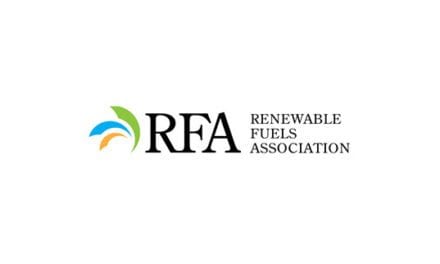WTI Breaks $30; ULSD Breaks the Buck
- Little bullish news for petroleum prices
- Typical supply response not happening
- U.S. crude oil production continues to exceed 9.2 million barrels daily
- United States likely to be net exporter of natural gas in 2017
Sincerely, Alan Levine Chairman, Powerhouse
Table covers crude oil and principal products. Other products, including residual fuel oil and “other oils” are not shown, and changes in the stocks of these products are reflected in “Total Petroleum Products.” Statistics Source: Energy Information Administration “Weekly Petroleum Status Report” available at www.eia.doe.gov
The Matrix
Oil prices broke important support when WTI crude oil traded below $30 for the first time since December 2003. Simultaneously, Ultra Low Sulfur Diesel futures contract broke the buck. There was very little to justify a bullish outlook except to a contrarian.
Open interest for WTI crude oil gained more than six per cent since December 21, 2015 when the most recent open interest rally began. Prices for WTI have fallen about 15 per cent. This is bearish because traders are holding on to their short positions as prices drop. (If short sellers were less bearish, they would bid to buy back their holdings.)
The economically appropriate (and traditional commodity) response to low prices is to reduce supply. This simply has not happened. OPEC added about 1.5 million barrels daily to global supply during 2015.
And the supply response in the United States has been muted as well. The Energy Information Administration projects continuing declines in shale oil production. February production is expected to fall by 638,000 barrels per day from its March, 2015 peak. Aggregate production has not been following this path. Data for the week ending January 8, 2016 shows total U.S. production still above 9.2 million barrels per day.
Very little seems to be developing to support price. OPEC is still pumping over quota. Export controls on Iranian crude oil have been lifted and the possibility of added Libyan supplies cannot be discounted. Global demand can also be satisfied by newly available U.S. supplies.
Financial analysts are piling on the bear wagon. It was not that many years ago that one bank called for crude oil at $200 per barrel. It now projects prices at $20 per barrel. Another financial factor is even more bearish, looking at $10. This is one very small sign for the bulls.
Supply/Demand Balances
Supply/demand data in the United States for the week ending January 08, 2016 were released by the Energy Information Administration.
Total commercial stocks of petroleum increased 10.0 million net barrels during the week ending January 8, 2016.
Builds were reported in stocks of RBOB, fuel ethanol, K-jet fuel, distillates, and residual fuel oil. Draws were reported in stocks of propane and other oils.
Crude oil supplies in the United States increased to 482.6 million barrels, a build of 0.2 million barrels.
Crude oil supplies increased in three of the five PAD Districts. PADD 2 (Midwest) crude oil stocks increased 3.0 million barrels, PADD 4 (Rockies) rose 0.1 million barrels, and PADD 5 (West Coast) crude oil stocks expanded 0.4 million barrels. PADD 1 (East Coast) crude oil stocks declined 0.4 million barrels and PADD 3 (Gulf Coast) stocks fell 2.8 million barrels.
Cushing, Oklahoma inventories increased 0.1 million barrels to 64.0 million barrels. This was the third consecutive record high at that location.
Domestic crude oil production increased 8,000 barrels daily to 9.227 million barrels per day.
Crude oil imports averaged 8.188 million barrels per day, a daily increase of 678,000 barrels.
Refineries used 91.2 per cent of capacity, a decrease of 1.3 percentage points from the previous report week.
Crude oil inputs to refineries decreased 194,000 barrels daily; there were 16.423 million barrels per day of crude oil run to facilities. Gross inputs, which include blending stocks, fell 230,000 barrels to 16.530 million barrels daily.
Total petroleum product inventories saw an increase of 9.8 million barrels from the previous report week.
Gasoline stocks increased 8.4 million barrels; total stocks are 240.4 million barrels. Demand for gasoline increased 0.341 million barrels per day to 8.500 million barrels daily.
Total product demand increased 0.245 million barrels daily to 18.540 million barrels per day. The two-week average for total petroleum demand is 18.4 million b/d, an unseasonably low figure for January, according to OPIS.
Distillate fuel oil supply increased 6.1 million barrels. National demand was reported at 2.832 million barrels per day during the report week. This was a weekly decrease of 201,000 barrels daily. The two-week average for distillate demand is 2.933 million b/d, similar to demand levels seen during the financial crisis, government data showed. Above normal temperature forecasts for February continue to weigh on demand as well.
Propane stocks decreased 4.5 million barrels to 91.9 million barrels. Current demand is estimated at 1.779 million barrels per day, an increase of 499,000 barrels daily from the previous report week.
Natural Gas
According to the EIA:
The net withdrawal for the storage week was 168 Bcf compared with the 113 Bcf net storage withdrawal reported the previous week. This withdrawal compares with the five-year (2011–15) average net withdrawal of 178 Bcf for the week and last year’s withdrawal of 220 Bcf for the same week. The working natural gas inventory for the storage week ending January 8 totaled 3,475 Bcf, which was 587 Bcf (20%) higher than last year at this time and 474 Bcf (16%) higher than the five-year average for this week.
The EIA forecasts that the United States will be a net exporter of natural gas during 2017. This is based on new LNG export capacity coming on line. Moreover, EIA expects reduced pipeline imports from Canada and growth in exports to Mexico. The U.S. has not been a net exporter of natural gas since 1955.
Natural gas usage may be moving away from its dependence on heating. One analysis shows natural gas use per Heating Degree Day (HDD) rising from 2.8 to 3.2 Bcf per HDD from 2013 to 2014. In 2015, demand rose even further to 4.1 Bcf per HDD. (Measurement per HDD neutralizes the effect of weather.) The likelihood is that the higher demand comes from power generation. The declaration of bankruptcy by Arch Coal is testimony to the expanding reach of natural gas.
Futures trading involves significant risk and is not suitable for everyone. Transactions in securities futures, commodity and index futures and options on future markets carry a high degree of risk. The amount of initial margin is small relative to the value of the futures contract, meaning that transactions are heavily “leveraged”. A relatively small market movement will have a proportionately larger impact on the funds you have deposited or will have to deposit: this may work against you as well as for you. You may sustain a total loss of initial margin funds and any additional funds deposited with the clearing firm to maintain your position. If the market moves against your position or margin levels are increased, you may be called upon to pay substantial additional funds on short notice to maintain your position. If you fail to comply with a request for additional funds within the time prescribed, your position may be liquidated at a loss and you will be liable for any resulting deficit. Past performance may not be indicative of future results. This is not an offer to invest in any investment program.
Powerhouse is a registered affiliate of Coquest, Inc.
Was this memo helpful? We’d like your feedback.
Please respond to [email protected]
or call: 202 333-5380
Copyright © 2016 Powerhouse, All rights reserved.













